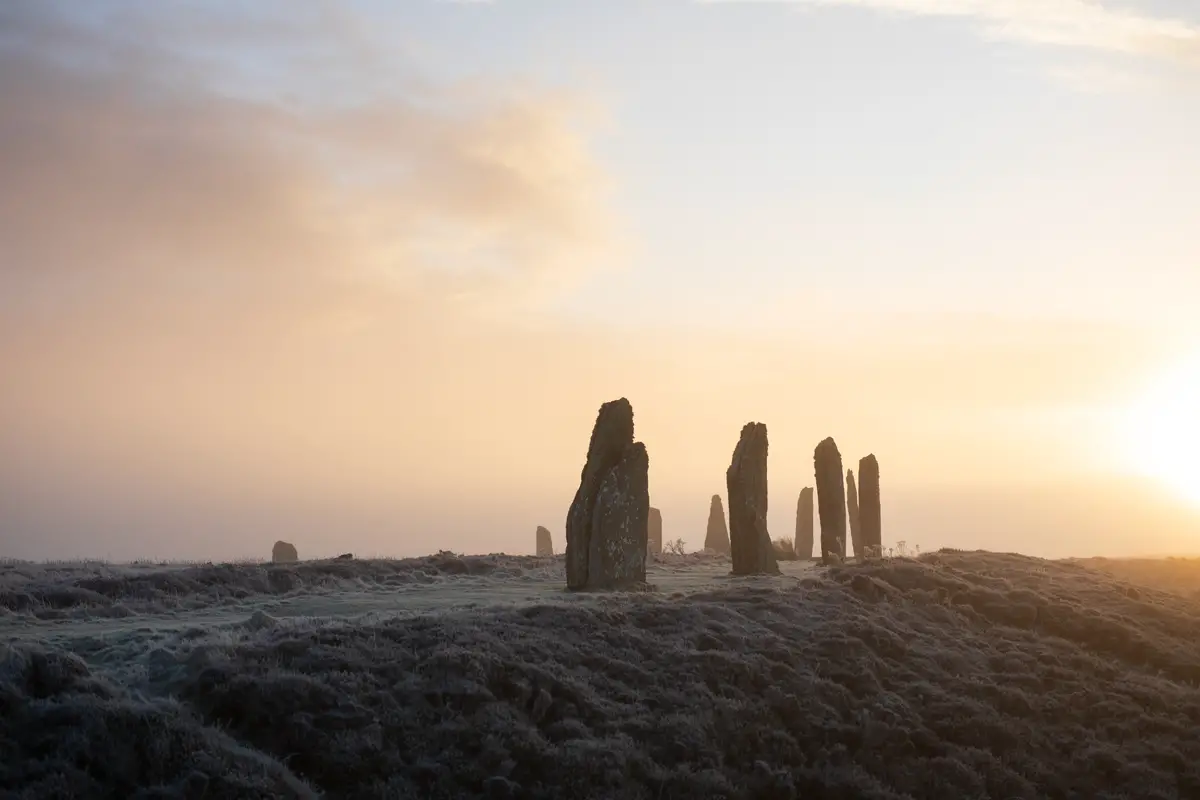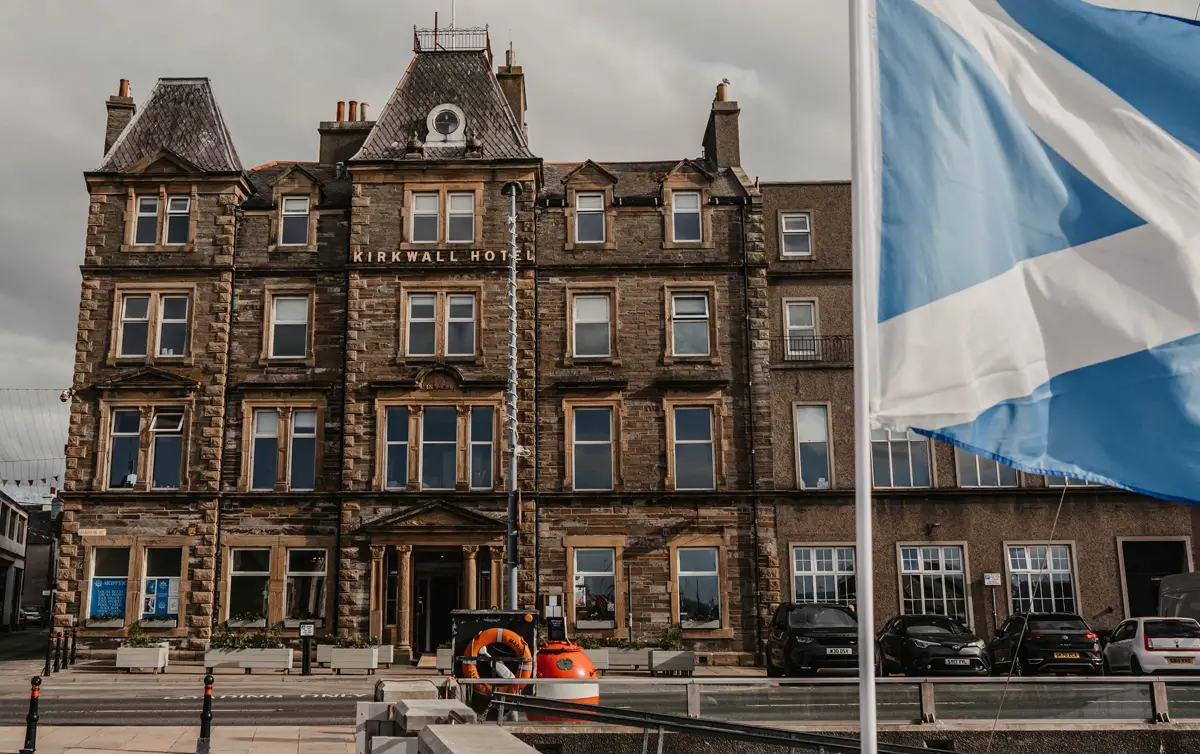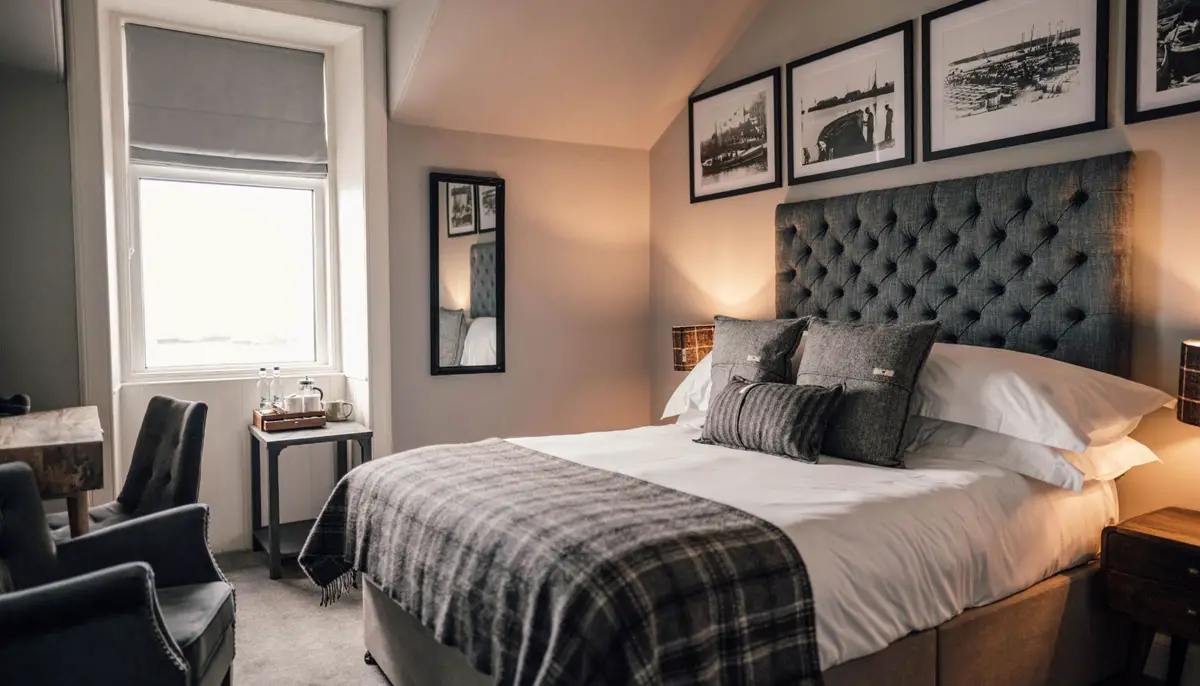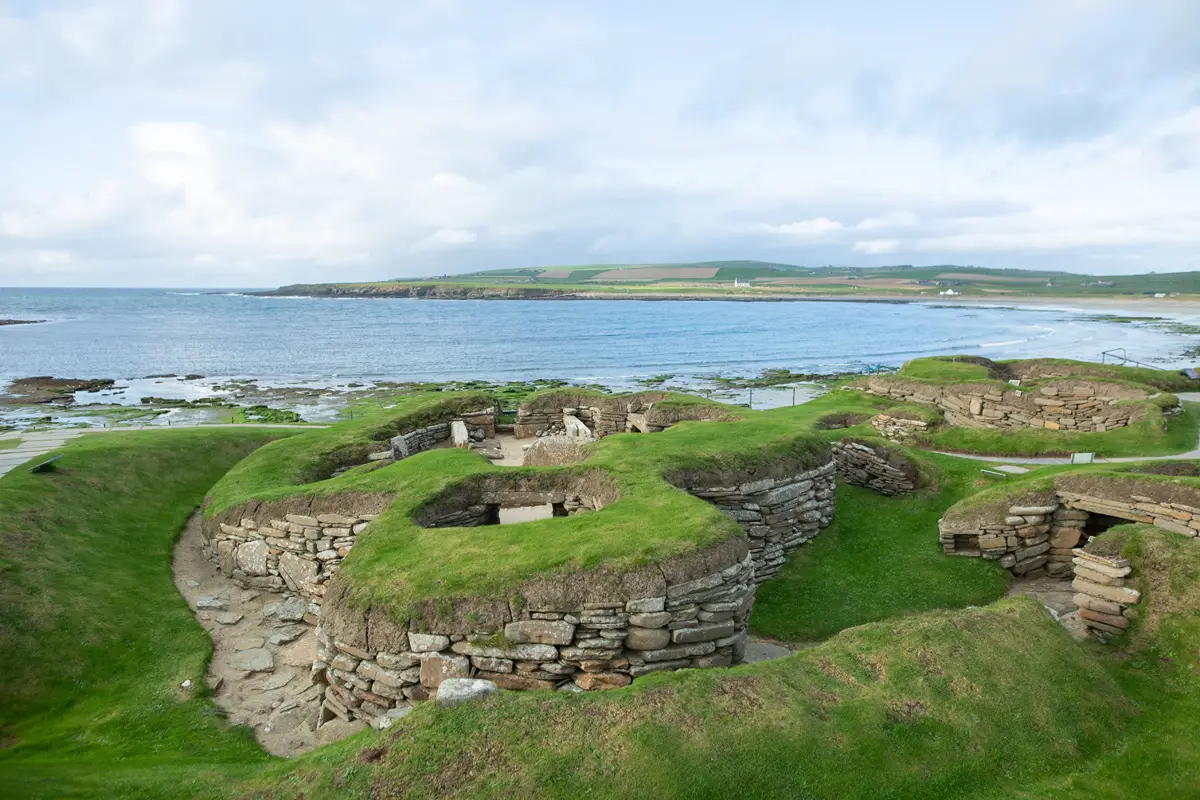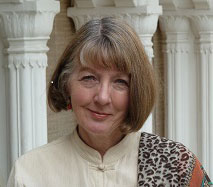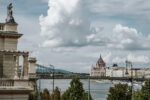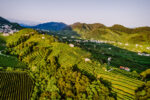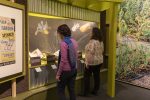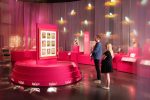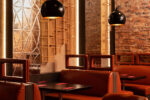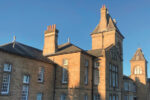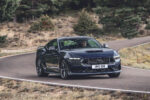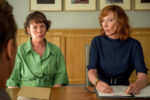Orkney & the Kirkwall Hotel – Review
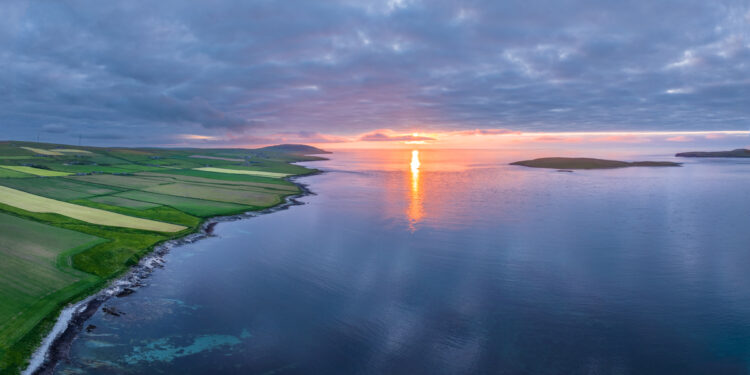
By Clare Jenkins, July 2025
Outside Kirkwall’s magnificent sandstone St Magnus Cathedral, a puzzled-looking American cruise ship passenger turns to his wife. “So where are we now?” he asks. “Is this Dublin?”
“It happens all the time,” Historic Scotland ranger Sandra Miller tells me later, at the Ring of Brodgar stone circle. “I had someone here yesterday asking where the castle was. I asked which castle, and he said Edinburgh…”
As the capital of Orkney, Kirkwall is, in fact, over 300 miles away from Edinburgh. As the curlew flies, it’s also nearer Oslo than London, and very much part of ‘the magnetic north’. Although the archipelago is officially part of the UK, it feels far more Scandinavian than British – not least thanks to its vast sky-and-seascape and the presence in Kirkwall of a Norwegian Consulate.
And just look at the names of the inter-island ferries: the Earl Sigurd, Earl Thorfinn, Earl Thorsvoe… The Hamnavoe, meanwhile, which ferries passengers across the Pentland Firth from the Scottish mainland to the port of Stromness, carries a stirring picture of a Viking on its side. Ingrid, Rognvald, Magnus and Freya are still popular first names on these islands.
As Lorraine Johnston puts it: “We’re not Scottish, we’re Orcadian, with our own rich culture and our own dialect.” Lorraine runs Immersive Orkney, a tour company aimed at showing visitors and residents alike something of that rich culture – whether it’s making bere bannocks while listening to fiddle music, hearing poetry spoken in dialect, or eating freshly-caught-and-cooked seafood and drinking local whisky on a leisurely boat ride along the coastline.
“Landmark sites”
Orkney’s Viking history is just part of the story. Some of the landmark sites popular with summer visitors include the Neolithic sites of Maeshowe (‘the finest chambered cairn in Western Europe’), Skara Brae (the once-submerged village rediscovered in 1850) and the Ring of Brodgar, the stone circle that – to my mind at least – out-henges Stonehenge. The Ring has become more carefully ‘managed’ in recent years with a low barrier around the standing stones and signs asking visitors to stick to the perimeter path (though the odd wedding party in Druid-style dress is occasionally allowed through…). But it has yet to become as commercialised as its southern rival.
Similarly, you can no longer wander in and out of the sunken stone houses of Skara Brae – once home to 50-100 people, now the best-preserved Neolithic village in northern Europe – as we did on our first visits to Orkney, 30 years ago. But there’s still a way to go before Orkney becomes as overcrowded as Venice or Barcelona during the summer season.
It doesn’t have the heat and colour, for starters – it’s often ten degrees cooler than England and grey cloud can hang low over the small green isles (70 in total, 20 inhabited). But then, as a waitress at the Kirkwall Hotel tells me, “I don’t like the heat in summer. I much prefer winter, when you can just draw the curtains and be all cosy in the dark.”
“Convivial air”
When we first started visiting the islands in the 1990s, we often stayed at the Kirkwall Hotel. It’s since gone through a couple of changes of ownership, and now belongs to the Original Collection group, Over the last few years, it’s been renovated and refurbished throughout, largely in shades of grey, while retaining its traditional air – including vintage revolving doors and a ‘cage’ lift with accordion-style metal doors.
The reception area has been brightened up with displays of apothecary bottles, Orcadian crafts (including stylish Orkney tweed cushions and mobile phone holders) and – as throughout the rest of the hotel – framed collections of old Orkney postcards on the walls. At the height of summer, there’s a busy, convivial air as people pass through to the Highland Bar, with its local gins, vast range of whiskies (the Highland Park Distillery is just up the road towards Scapa Flow), and beers called Raven Ale, Dark Island and Cliff Edge.
Our second-floor room is harbour-facing, which means we’re glued to the window (binoculars come in handy). From the comfort of our chairs, we watch as the various Earls ferry people back and forth to the outer isles, passengers strolling or scurrying along the pierhead. In the far distance, we can just about make out the church on the island of Egilsay, where the Norse earl St Magnus was killed in 1117 by his cousin Earl Hakon.
“Fascinating depictions”
After breakfast we walk back to St Magnus Cathedral and overhear another cruise ship visitor (they run into thousands on some summer days) refusing to go inside. “I’ve had enough of churches,” he tells his wife, parking himself on a bench outside. Churches?! Doesn’t he know that this 1,000-year-old cathedral is considered one of the finest religious buildings in the Western hemisphere? Doesn’t he know that the Orcadian poet George Mackay Brown called it ‘A ship floating on the ocean of time’, and the bones of St Magnus are in one of the massive sandstone pillars behind the altar? Doesn’t he even know that the gravestones lining the walls have fascinating depictions of skull-and-crossbones, ancient hour glasses, women with flowing hair, even the odd Native American Indian-style head?
Ah, well, you just can’t tell some people… You can’t even tell them that, way beyond the altar, they’ll find a superb marble statue showing Dr John Rae, Victorian explorer of northern Canada and discoverer of the fate of the Franklin expedition, which came to grief while charting the Northwest Passage. The great man – who’s buried in the churchyard outside – is depicted lying on his side, smiling in his sleep, an open book and a rifle beside him.
At Skara Brae, I get talking to Historic Scotland volunteer ranger Michael, who’s from Canberra in Australia but came here four years ago after completing a PhD in archaeology. “I came here and thought, there are worse ways to spend the rest of my life,” he says. “I think I’ll be here forever, because it’s full of archaeology.”
“Huge expanses”
His colleague Georgia, from Bristol, has only been here a few weeks, doing an internship on the islands. “This is such a special place,” she says of Skara Brae. “Especially in the evenings, when there’s no-one else here and it has its own atmosphere, especially being so close to the sea. It’s very special.”
Orkney as a whole is very special, what with its history, its Scandi-feel, those huge expanses of sea and sky, the lapwings, oystercatchers and redshanks, the sandy beaches and seals…
When we first came here, on a vintage coach trip back in the 1990s, our fellow passengers included a Canadian photographer and a retired Latin teacher. On a trip to the island of Hoy, as the sky turned ever greyer, the photographer sighed in exasperation: “There’s nothing to photograph here,” he complained. “It’s just so dull.” Later, as we visited the island’s 19th Century Martello Tower, the sun burst through the clouds. Suddenly the view turned from black and white into glorious technicolour. The sky was a vivid Virgin Mary blue, the sea glimmered silver, the fields became a dazzling emerald green. Miss Vetch, the Latin teacher, smiled happily. “The colours here are so bewitching, aren’t they?” she said.
Loganair fly from various British airports, including Manchester, to Kirkwall via Aberdeen or Inverness: loganair.co.uk
Rooms at The Kirkwall Hotel start at £165 for a classic double, B&B, off season: The Kirkwall Hotel, Harbour Street, Kirkwall, Orkney KW15 1LE, tel: 01856 872232, kirkwallhotel.com
Immersive Orkney: immersiveorkney.com
Find out more about Orkney by visiting orkney.com
top image: orkney.com
